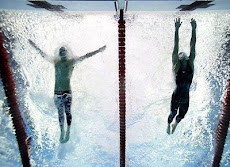
Astronauts in space can spend hours exercising everyday. This aims to counteract the detraining effect of zero gravity conditions, which cause numerous physiological changes in the body. In muscle tissue, mass and strength decrease over time. The strength loss is especially evident in the muscles used to maintain posture, as they become largely irrelevant whilst floating around a spacecraft. Another significant effect of weightlessness is a decline is the density of bone, about 2% per month on average in space. This is less reversible compared to muscular changes and can have a particularly debilitating impact on return to earth.
Cardiovascular changes include increased blood return to the heart, due to less gravity-induced pooling of blood in the legs, while the “puffy faces” of astronauts develop due to this redistribution of blood in the body. Decrease in overall blood volume also develops and can cause low blood pressure and fainting when back in normal gravity environments. Many of the changes contribute to an overall drop in maximal aerobic capacity/fitness (VO2 Max). These negative adaptations to out-of-orbit travel have generated more and more research in designing relevant exercise programs and equipment, which seeks to safeguard the future health of astronauts.
Many different types of exercise and training have been used, some proving more effective than others. Heavy “push-pull” equipment attached to the spaceship, elastic bands/cords/belts and resistive equipment have been developed, while “strap-down” treadmills and bicycles are the norm. One device, currently in use, is the advanced Resistive Exercise Device (aRED). This works with vacuum cylinders, similar to bicycle pumps in reverse, which can apply loads up to 250 kg, according to NASA. In the example of a squat, the vacuum engages as the astronaut stands up, and when squatting back down, the vacuum draws the bar back to the origin position. The main concern, even with creating beneficial weight-bearing or elastic equipment, is still a lack of a total unilateral force acting on the body such as gravity. This leaves the decreases in bone density largely unaffected.

Latest research mainly revolves around creating artificial gravity-like forces. One design, dubbed “The Space Cycle” by researchers at the National Space Biomedical Research Institute (NSBRI), aims to accomplish this while aiming to be small enough and simple enough to operate and/or repair in a spacecraft. Picture a two-person, hanging merry-go-round. A rotating wheel sits on top of a central column. On one side of the wheel a reclining bicycle is suspended. Opposite is a cage-like platform, where a second person will stand. As the one astronaut pedals the bicycle, the whole apparatus starts to spin, causing both the bicycle and the platform to rotate around the column. As the rotational speed increases, both astronauts begin to experience effects of this centrifugal force as a form of artificial gravity.
Astronauts on long-term missions presently need approximately two hours of standard exercise a day to resist the effects of micro-gravity. The Space Cycle is seen as a way of reducing this exercise time, therefore increasing the productivity of those onboard. The weight of the mechanism, which is currently constructed out of steel, poses a problem. This may be reduced in the future using carbon composite materials, which may also slightly reduce its diameter, making it possible for use on the International Space Station.
Jed




















